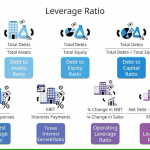When it comes to investing, there are two primary methods of analysis: qualitative and quantitative. Each approach brings a unique perspective to the investment decision-making process.
Understanding qualitative analysis
Qualitative analysis involves evaluating various subjective factors that may impact an investment’s performance, such as company management, brand reputation, and industry trends. This method relies on extensive research, interviews, and expert opinions to gain insights into the qualitative factors that can drive an investment’s success.

Qualitative analysis goes beyond the numbers and focuses on understanding the qualitative aspects of an investment opportunity. It considers factors such as the company’s competitive advantage, management team’s experience, and the overall industry landscape. By analyzing these subjective factors, investors can gain a deeper understanding of the investment’s potential.
One key factor to consider in qualitative analysis is company management. A strong and capable management team can have a significant impact on the success of an investment. By evaluating the track record, leadership style, and strategic vision of the management team, investors can assess the company’s ability to execute its business plans.
Another important factor to consider is brand reputation. A strong brand can create a competitive advantage, enhance customer loyalty, and drive long-term growth. By analyzing the brand’s reputation, customer perception, and market position, investors can gauge the potential value of the investment.
Additionally, industry trends play a crucial role in qualitative analysis. By understanding the dynamics of the industry in which the investment operates, investors can anticipate future challenges and opportunities. This includes analyzing market trends, competitive landscape, and regulatory factors that can impact the investment’s performance.
Examples of qualitative analysis in investing include assessing the potential impact of a new product launch, evaluating the reputation of a company’s CEO, or analyzing the competitive positioning of a company within its industry.
Qualitative analysis offers several advantages. It provides a holistic view of an investment opportunity by considering both objective and subjective factors. It allows investors to uncover insights that may not be captured by quantitative analysis alone. Additionally, qualitative analysis can help investors identify potential risks and make more informed investment decisions.
Key components of qualitative analysis
When conducting qualitative analysis, investors rely on various sources of information, including interviews with company management, industry reports, and customer reviews. By carefully analyzing these factors, investors can gain insights into a company’s long-term viability and growth potential.
One of the key components of qualitative analysis is evaluating the quality of a company’s management team. Strong leadership is often a crucial factor in a company’s success. Investors assess the experience, expertise, and track record of the management team to determine their ability to navigate challenges and drive growth.
Another important aspect of qualitative analysis is assessing a company’s brand reputation and customer perception. A strong and trusted brand can give a company a competitive advantage and help it maintain customer loyalty. Investors analyze factors such as brand recognition, customer satisfaction, and market position to gauge the strength of a company’s brand.
Furthermore, qualitative analysis involves evaluating a company’s competitive advantage. This refers to the unique qualities or assets that give a company an edge over its competitors. It could be a technological innovation, a superior distribution network, or a strong network of strategic partnerships. Investors assess these factors to determine if a company has a sustainable competitive advantage that can drive long-term growth.
Importance of qualitative analysis in investment decision-making
But why is qualitative analysis important? Well, it helps investors identify companies that possess intangible qualities that can’t be easily measured. These qualities, like a strong company culture or a visionary CEO, can play a crucial role in a company’s ability to succeed in the long run.
Quantitative analysis, which focuses on financial data, provides valuable insights into a company’s current financial health and performance. However, it fails to capture the qualitative factors that can impact a company’s future prospects. By incorporating qualitative analysis into the investment decision-making process, investors can gain a more holistic view of a company’s potential.
Qualitative analysis helps investors identify opportunities and risks that may not be immediately apparent from financial statements alone. It allows them to uncover hidden gems, such as undervalued companies with strong growth potential, or identify red flags, such as management issues or reputational risks. By considering both quantitative and qualitative factors, investors can make more informed and well-rounded investment decisions.
Common qualitative analysis techniques
There are several techniques and methods used in qualitative analysis. One commonly used technique is conducting interviews with company management. By speaking directly with executives and key decision-makers, investors can gain valuable insights into a company’s strategy, vision, and future plans. These interviews provide an opportunity to assess the quality of the management team and their ability to execute on their plans.
Another technique is analyzing industry reports and market research. These reports provide valuable information about market trends, competitive landscape, and industry dynamics. By understanding the broader industry context, investors can assess a company’s position within its market and identify potential opportunities or threats.
Additionally, investors often rely on customer reviews and feedback to evaluate a company’s products or services. Customer sentiment and satisfaction can provide insights into the quality of a company’s offerings and its ability to meet customer needs. Positive customer feedback and high customer loyalty can be indicators of a strong and sustainable business.
Factors to consider in qualitative analysis
When conducting qualitative analysis, investors need to consider a wide range of factors. Here are some key factors to keep in mind:
- Management quality: Assess the experience, expertise, and track record of the management team.
- Brand reputation: Evaluate the strength of the company’s brand and customer perception.
- Competitive advantage: Determine if the company has unique qualities or assets that give it a competitive edge.
- Market trends: Consider the broader industry context and market dynamics.
- Customer feedback: Analyze customer reviews and feedback to gauge product quality and customer satisfaction.
- Regulatory environment: Evaluate the impact of regulatory factors on the company’s operations and growth prospects.
- Macro-economic factors: Consider the overall economic conditions and how they may affect the company’s performance.
By taking these factors into account, investors can gain a more comprehensive understanding of a company’s potential and make better-informed investment decisions.
Limitations of qualitative analysis
While qualitative analysis provides valuable insights, it also has its limitations. One of the main challenges is the subjective nature of qualitative factors. Unlike quantitative data, which can be objectively measured, qualitative factors are often open to interpretation. Different investors may have different opinions about the same qualitative aspect of a company.
Moreover, qualitative analysis relies on sources of information that may not always be readily available or reliable. Company management may provide biased or incomplete information during interviews, and industry reports may have limitations in terms of accuracy or relevancy. Investors need to exercise caution and critically evaluate the sources of information they rely on.
Another limitation is the time and effort required for qualitative analysis. Conducting interviews, analyzing industry reports, and gathering customer feedback can be time-consuming processes. Investors need to allocate sufficient resources and expertise to effectively conduct qualitative analysis.
Examples of qualitative analysis in investing
To better understand how qualitative analysis is applied in investing, let’s consider a few examples:
- Company culture: An investor may analyze a company’s culture to determine if it aligns with their investment philosophy. Companies with strong cultures often have motivated employees and a focus on innovation, which can contribute to long-term success.
- Management team: Assessing the quality of a company’s management team is a critical aspect of qualitative analysis. Investors may look for a strong track record of success, experience in the industry, and a clear strategic vision.
- Brand reputation: Companies with strong brand reputations often enjoy customer loyalty and a competitive advantage. Investors may analyze factors such as brand recognition, customer satisfaction ratings, and brand value to assess a company’s brand strength.
- Competitive advantage: Evaluating a company’s competitive advantage is crucial in determining its long-term potential. Investors may analyze factors such as intellectual property, unique technology, or exclusive partnerships to assess a company’s ability to stay ahead of competitors.
Tools and resources for conducting qualitative analysis
There are several tools and resources available to investors for conducting qualitative analysis. Here are a few examples:
- Company filings: Investors can access annual reports, quarterly filings, and other regulatory documents to gather information about a company’s operations, financials, and management.
- Industry reports: Research firms and industry associations often publish reports that provide insights into market trends, industry dynamics, and competitive landscape.
- Customer reviews: Online platforms and social media provide a wealth of customer feedback and reviews that investors can analyze to gauge product quality and customer satisfaction.
- Company websites: Company websites often contain valuable information about a company’s products, services, and strategic direction.
Investors should leverage these tools and resources to gather information and conduct thorough qualitative analysis.
Integrating qualitative and quantitative analysis in investing
To make well-rounded investment decisions, it is essential to integrate both qualitative and quantitative analysis. While qualitative analysis provides insights into a company’s qualitative aspects, quantitative analysis focuses on financial data and performance metrics.
By combining both approaches, investors can gain a more comprehensive understanding of a company’s potential. For example, quantitative analysis can help identify undervalued companies with strong financials, while qualitative analysis can uncover factors that may impact a company’s future growth and success.
It is important to strike a balance between qualitative and quantitative analysis and use them as complementary tools in the decision-making process. This integrated approach allows investors to make more informed and strategic investment decisions.
In essence, qualitative analysis is a crucial tool for savvy investors looking to make informed investment decisions. It goes beyond numbers and financial statements to consider the qualitative aspects that can impact a company’s success. By evaluating factors such as management quality, brand reputation, and competitive advantage, investors can gain insights into a company’s long-term viability and growth potential.
Qualitative analysis helps investors identify companies that possess intangible qualities that can’t be easily measured. These qualities, like a strong company culture or a visionary CEO, can play a crucial role in a company’s ability to succeed in the long run.
By integrating qualitative and quantitative analysis, investors can gain a more holistic view of a company’s potential and make well-rounded investment decisions. So, if you’re ready to take your investment decisions to the next level, understanding qualitative analysis is essential. It allows you to see beyond the numbers and make informed investment choices based on the qualitative factors that truly matter.
Understanding quantitative analysis
On the other hand, quantitative analysis relies on objective data and mathematical models to identify investment opportunities. This method involves analyzing financial statements, ratios, and historical performance to make informed decisions based on quantifiable metrics.

Quantitative analysis focuses on the numbers and uses statistical models to identify patterns and trends. It involves analyzing financial statements, such as balance sheets, income statements, and cash flow statements, to evaluate the financial health of a company. By calculating various ratios, such as price-to-earnings ratio, return on equity, and debt-to-equity ratio, investors can assess the investment’s profitability, efficiency, and leverage.
One key factor to consider in quantitative analysis is financial performance. By analyzing historical financial statements, investors can assess the company’s revenue growth, profitability, and cash flow generation. This helps investors gauge the investment’s potential for future growth and profitability.
Another important factor to consider is market data. Quantitative analysis involves analyzing market trends, such as stock price movements, trading volumes, and market indices, to identify investment opportunities. By using technical analysis tools, such as moving averages and relative strength index (RSI), investors can identify potential buying or selling signals.
Additionally, quantitative analysis considers risk management. By calculating risk metrics, such as standard deviation and beta, investors can assess the investment’s volatility and potential downside. This helps investors determine the appropriate level of risk for their investment portfolio.
Examples of quantitative analysis in investing include using discounted cash flow (DCF) models to value a company, analyzing historical stock price data to identify price patterns, or using algorithmic trading strategies based on quantitative models.
Quantitative analysis offers several advantages. It provides a systematic and objective approach to investment decision-making. It allows investors to analyze large amounts of data efficiently and identify patterns that may not be visible to the naked eye. Additionally, quantitative analysis can help investors manage risk by providing a quantitative framework for assessing potential downside.
The importance of quantitative analysis
Quantitative analysis plays a crucial role in investing for several reasons. First and foremost, it helps investors measure risk and return. By analyzing historical data and identifying patterns, investors can gain insights into the potential risks associated with an investment and estimate the expected returns. This information is essential for making informed decisions and managing portfolios effectively.
Additionally, quantitative analysis helps evaluate the performance of investment strategies. By studying historical data and backtesting various strategies, investors can assess the effectiveness of different approaches and make adjustments accordingly. This iterative process allows investors to refine their strategies and increase their chances of success in the market.
Key concepts in quantitative analysis
To effectively utilize quantitative analysis, it is important to understand some key concepts. One such concept is correlation, which measures the relationship between two variables. Correlation coefficients range from -1 to 1, with positive values indicating a positive relationship, negative values indicating a negative relationship, and values close to zero indicating no relationship.
Another key concept is volatility, which measures the degree of variation in the price of a security or market index over time. Volatility is an important factor to consider when assessing the risk associated with an investment. Additionally, concepts such as regression analysis, standard deviation, and mean reversion are commonly used in quantitative analysis.
Types of quantitative analysis techniques
There are various techniques used in quantitative analysis, each serving a different purpose. One widely used technique is time series analysis, which involves analyzing data collected over a period of time to identify patterns and trends. This technique is particularly useful for forecasting future prices and market movements.
Another technique is regression analysis, which helps identify the relationship between a dependent variable and one or more independent variables. By analyzing historical data, regression analysis can provide insights into how changes in one variable affect another. This information is valuable for predicting future outcomes.
Other quantitative analysis techniques include factor analysis, Monte Carlo simulation, and machine learning. Factor analysis helps identify underlying factors that contribute to the performance of a portfolio or security, enabling investors to make more informed decisions. Monte Carlo simulation involves using random sampling to model possible outcomes and assess the probability of different scenarios. Machine learning techniques, on the other hand, leverage algorithms to analyze large volumes of data and uncover patterns that may not be apparent to human analysts.
Benefits of using quantitative analysis in investing
Using quantitative analysis in investing offers several benefits. Firstly, it provides a more objective and data-driven approach to decision-making. By relying on quantitative models and historical data, investors can reduce the influence of emotions and biases that may cloud judgment. This leads to more disciplined and rational investment decisions.
Additionally, quantitative analysis allows investors to identify potential investment opportunities that may be missed through qualitative analysis alone. By systematically analyzing large volumes of data, investors can uncover hidden patterns and relationships that can guide their investment strategy. This can help generate alpha and outperform the market.
Another benefit of using quantitative analysis is the ability to backtest investment strategies. By simulating the performance of different strategies using historical data, investors can evaluate the effectiveness and robustness of their approaches. This allows for the refinement and improvement of strategies over time.
Common challenges in quantitative analysis
While quantitative analysis offers numerous benefits, there are also challenges to be aware of. One common challenge is data quality and availability. Ensuring that data is accurate, reliable, and up-to-date is crucial for generating meaningful insights. Additionally, accessing the necessary data can be a challenge, especially for individual investors who may not have the resources or access to comprehensive datasets.
Another challenge is model risk. Quantitative models are built on assumptions and historical data, which may not always hold true in the future. Changes in market conditions, regulatory environments, or other unforeseen factors can impact the performance of quantitative models. Regular monitoring and validation of models are necessary to mitigate this risk.
Furthermore, the complexity of quantitative analysis techniques can be a barrier for some investors. Understanding and implementing these techniques require a strong background in mathematics, statistics, and programming. Overcoming this learning curve may require time and resources.
Tools and software for quantitative analysis
Thankfully, there are numerous tools and software available that can assist with quantitative analysis. These tools range from basic spreadsheet software to sophisticated programming languages and platforms. Excel is a popular choice for conducting basic quantitative analysis, while more advanced users may opt for programming languages such as Python or R. Additionally, there are specialized platforms and software designed specifically for quantitative analysis, such as MATLAB and Bloomberg Terminal.
The choice of tools and software depends on the specific needs and expertise of the investor. It’s important to select tools that are user-friendly, reliable, and compatible with the desired analysis techniques.
Conclusion: Choosing the right approach for your investment strategy
In conclusion, the choice between qualitative and quantitative analysis ultimately depends on an investor’s preferences, risk tolerance, and the specific investment opportunity at hand. Both approaches have their merits and drawbacks.
Qualitative analysis can provide valuable insights into market trends and company dynamics, but it may be prone to biases and subjective judgments. It requires extensive research, interviews, and expert opinions to gain a deeper understanding of an investment opportunity.
Quantitative analysis, on the other hand, relies heavily on historical data and mathematical models. It offers a systematic and objective approach to investment decision-making. However, it may overlook qualitative factors that could impact future performance.
To make more informed investment decisions, investors can combine elements of both qualitative and quantitative analysis. By considering both objective and subjective factors, investors can gain a more comprehensive understanding of an investment opportunity. This allows for a balanced investment strategy that takes into account both the numbers and the qualitative aspects of an investment.
Ultimately, the key is to find a balance that aligns with your investment goals, risk tolerance, and personal preferences. Whether you lean more towards qualitative or quantitative analysis, the most important thing is to conduct thorough research, stay informed, and make informed decisions based on a well-rounded analysis.






